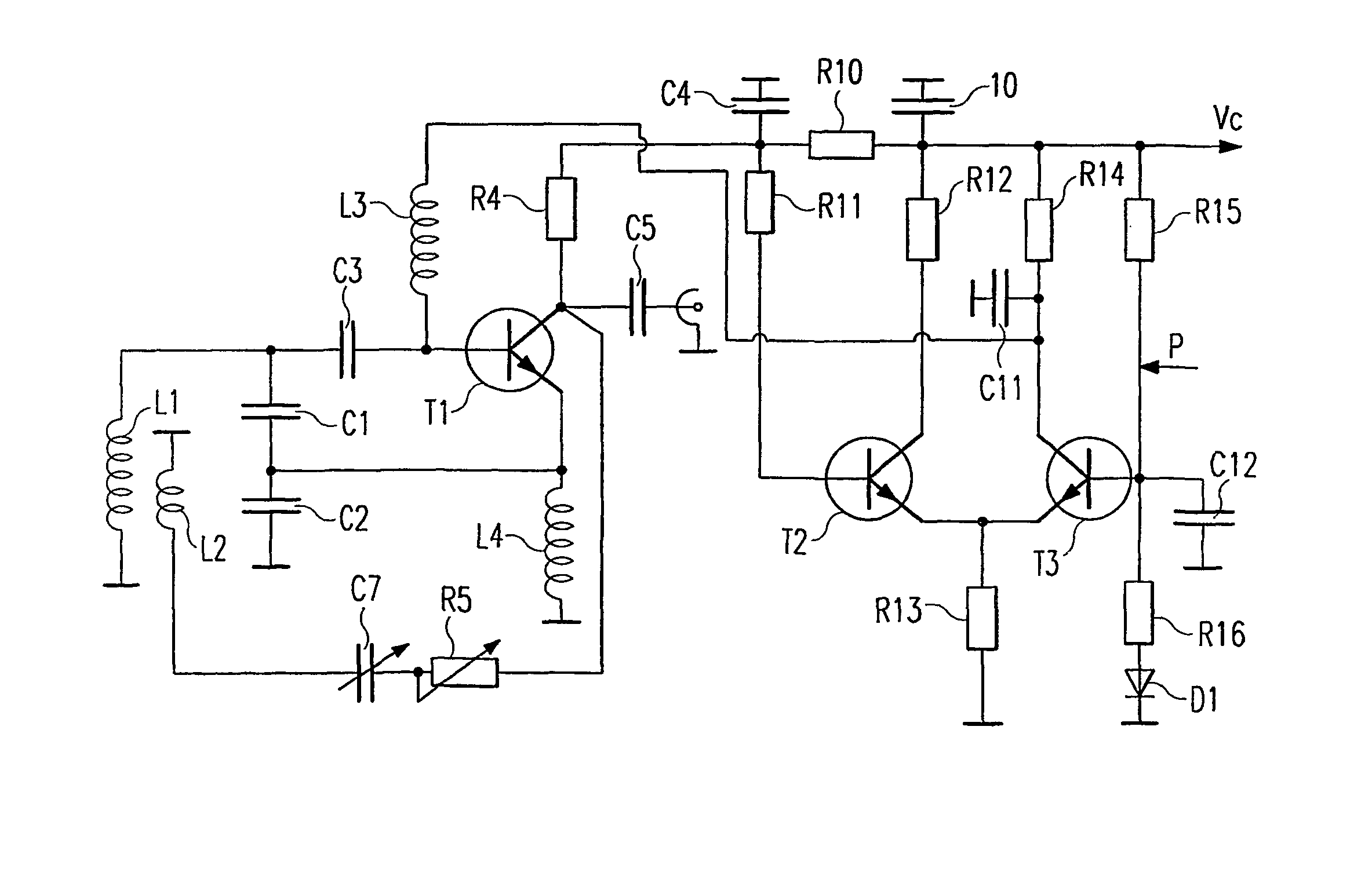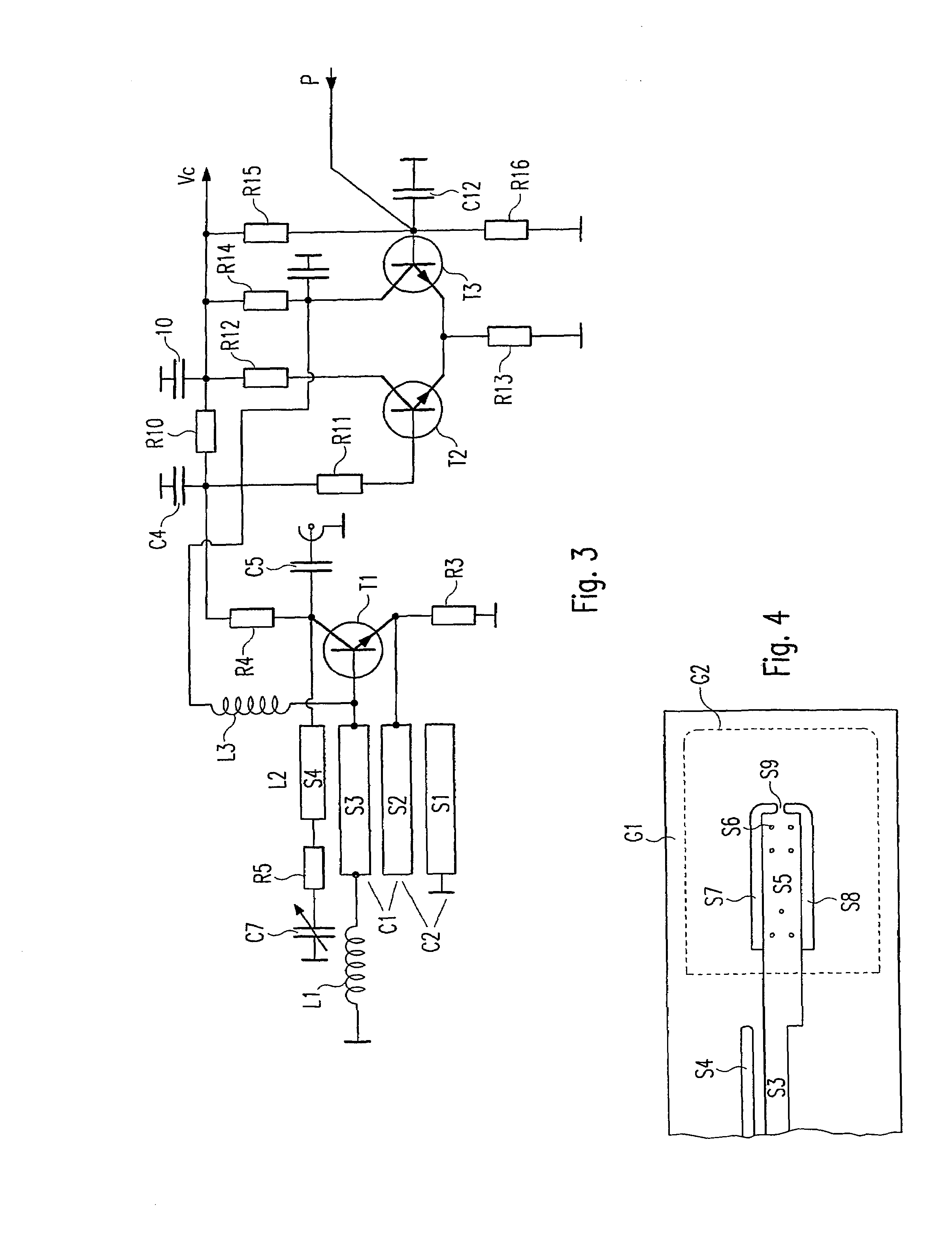Oscillator circuit configuration
a technology of oscillator circuit and configuration, applied in the direction of oscillator generator, pulse generator, pulse technique, etc., can solve problems such as temperature fluctuation, and achieve the effect of preventing temperature, frequency and amplitude fluctuations
- Summary
- Abstract
- Description
- Claims
- Application Information
AI Technical Summary
Benefits of technology
Problems solved by technology
Method used
Image
Examples
Embodiment Construction
)
[0015]The invention is explained in more detail below by way of the embodiments shown in schematic drawings.
[0016]FIG. 1 shows the principle circuit diagram of a Colpitts oscillator with a parallel resonant circuit, consisting of an inductor L1 and the series circuit of two capacitors C1 and C2. A transistor T1 is used as an amplifier element, in the embodiment shown a bipolar npn-transistor. The resonant frequency of the oscillator is determined by L1 and C1 / C2. The operating point of the oscillator T1 is determined by the resistors R1, R2 and R3, through which also the supply voltage Vc is applied. If the output frequency is decoupled via the capacitor C5 on the collector of the transistor T1, a resistor R4 determining the output resistance is provided between collector and the capacitor C4. If decoupling occurs on the emitter of the transistor, as indicated by a dotted line in FIG. 1 through C8 and R8, this resistor R4 is superfluous and the collector of the transistor T1 is dir...
PUM
 Login to View More
Login to View More Abstract
Description
Claims
Application Information
 Login to View More
Login to View More - R&D
- Intellectual Property
- Life Sciences
- Materials
- Tech Scout
- Unparalleled Data Quality
- Higher Quality Content
- 60% Fewer Hallucinations
Browse by: Latest US Patents, China's latest patents, Technical Efficacy Thesaurus, Application Domain, Technology Topic, Popular Technical Reports.
© 2025 PatSnap. All rights reserved.Legal|Privacy policy|Modern Slavery Act Transparency Statement|Sitemap|About US| Contact US: help@patsnap.com



